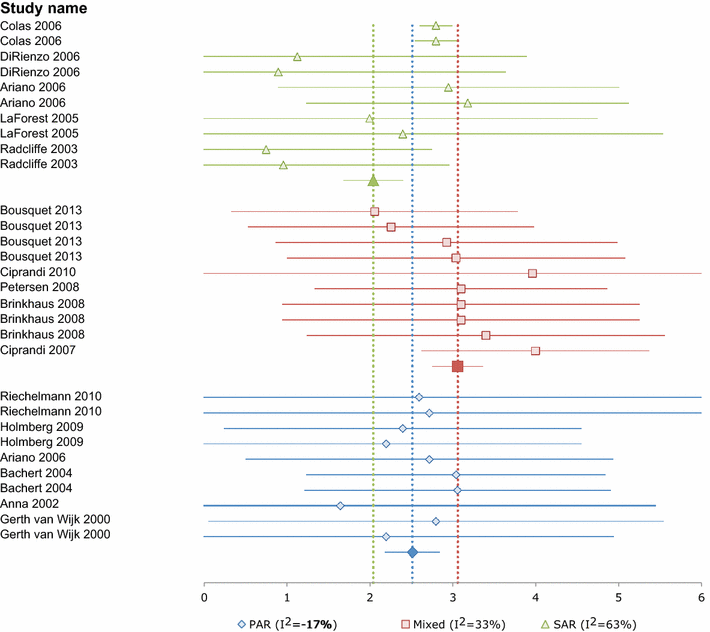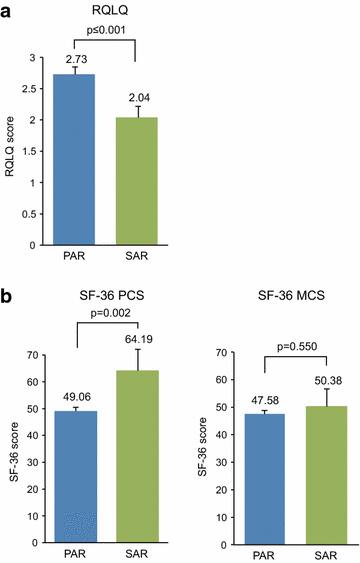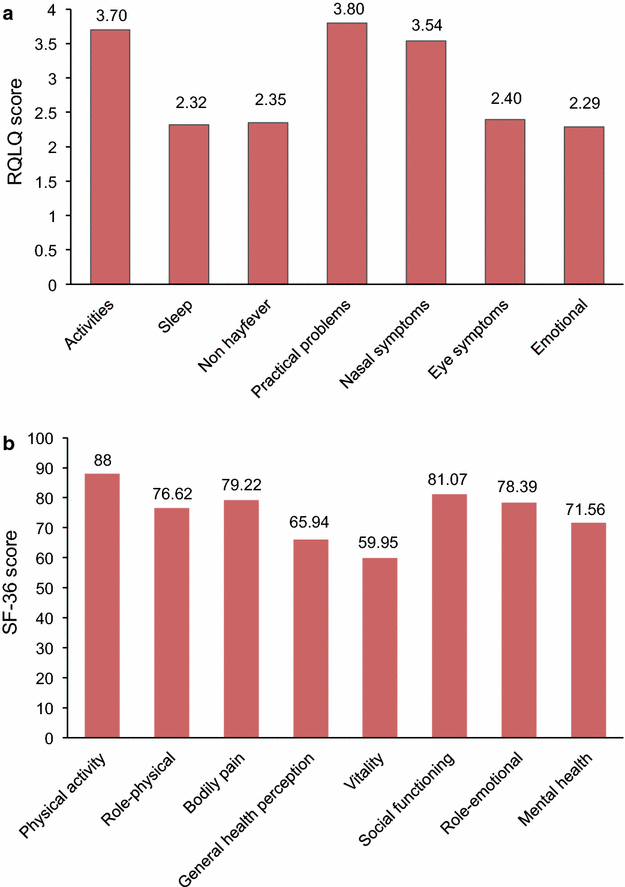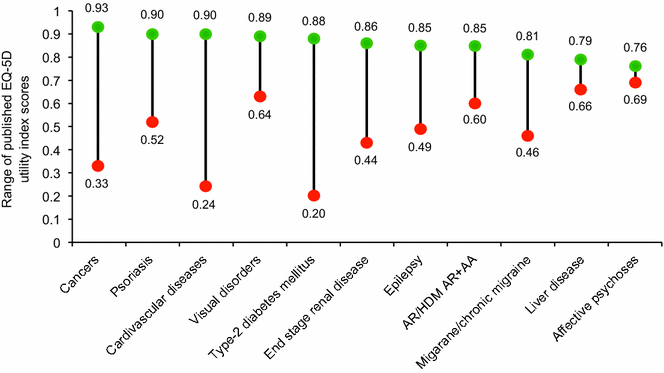Burden of allergic respiratory disease: a systematic review
- PMID: 27708552
- PMCID: PMC5041537
- DOI: 10.1186/s12948-016-0049-9
Burden of allergic respiratory disease: a systematic review
Abstract
This meta-analysis compared the health-related quality of life (HRQL) of patients with allergic rhinitis (AR) and/or allergic asthma (AA) caused by perennial house dust mite (HDM) versus AR and/or AA caused by seasonal pollen allergy. Following a systematic search, the identified studies used the disease-specific rhinitis quality of life questionnaire or generic instruments (SF-36 and SF-12). Summary estimates obtained by meta-analysis showed that HRQL in patients with perennial HDM allergy was significantly worse than that of patients with seasonal pollen allergy, when measured by both disease-specific and generic HRQL instruments, and was reflected by an impact on both physical and mental health. A systematic review of cost data on AR and AA in selected European countries demonstrated that the majority of the economic burden was indirectly caused by high levels of absenteeism and presenteeism; there was little or no evidence of increasing or decreasing cost trends. Increased awareness of the detrimental effects of AR and/or AA on patients' HRQL and its considerable cost burden might encourage early diagnosis and treatment, in order to minimize the disease burden and ensure beneficial and cost-effective outcomes.
Keywords: Allergic asthma; Allergic rhinitis; Economic burden; Meta-analysis; Quality of life; Systematic review.
Figures







Similar articles
-
Epidemiology of allergic rhinitis caused by grass pollen or house-dust mites in Spain.Am J Rhinol Allergy. 2011 Jul-Aug;25(4):e123-8. doi: 10.2500/ajra.2011.25.3599. Epub 2011 Feb 10. Am J Rhinol Allergy. 2011. PMID: 21310119 Clinical Trial.
-
SQ house dust mite sublingually administered immunotherapy tablet (ALK) improves allergic rhinitis in patients with house dust mite allergic asthma and rhinitis symptoms.Ann Allergy Asthma Immunol. 2015 Feb;114(2):134-40. doi: 10.1016/j.anai.2014.11.015. Ann Allergy Asthma Immunol. 2015. PMID: 25624131 Clinical Trial.
-
The impact of perennial allergic rhinitis with/without allergic asthma on sleep, work and activity level.Allergy Asthma Clin Immunol. 2019 Dec 6;15:81. doi: 10.1186/s13223-019-0391-9. eCollection 2019. Allergy Asthma Clin Immunol. 2019. PMID: 31827545 Free PMC article.
-
An evidence-based analysis of house dust mite allergen immunotherapy: a call for more rigorous clinical studies.J Allergy Clin Immunol. 2013 Dec;132(6):1322-36. doi: 10.1016/j.jaci.2013.09.004. Epub 2013 Oct 18. J Allergy Clin Immunol. 2013. PMID: 24139829 Review.
-
Respiratory allergy caused by house dust mites: What do we really know?J Allergy Clin Immunol. 2015 Jul;136(1):38-48. doi: 10.1016/j.jaci.2014.10.012. Epub 2014 Nov 22. J Allergy Clin Immunol. 2015. PMID: 25457152 Review.
Cited by
-
Associations of sleep problems with asthma and allergic rhinitis among Chinese preschoolers.Sci Rep. 2022 May 16;12(1):8102. doi: 10.1038/s41598-022-12207-3. Sci Rep. 2022. PMID: 35577978 Free PMC article.
-
Genotypic and environmental effect on male flower production in Cupressus sempervirens clones and selection of genotypes with reduced pollen emission.Front Plant Sci. 2022 Nov 1;13:1032200. doi: 10.3389/fpls.2022.1032200. eCollection 2022. Front Plant Sci. 2022. PMID: 36388535 Free PMC article.
-
Real-world evidence for the long-term effect of allergen immunotherapy: Current status on database-derived European studies.Allergy. 2022 Dec;77(12):3584-3592. doi: 10.1111/all.15506. Epub 2022 Sep 19. Allergy. 2022. PMID: 36074052 Free PMC article. Review.
-
Clinical Practice Guideline: Immunotherapy for Inhalant Allergy.Otolaryngol Head Neck Surg. 2024 Mar;170 Suppl 1(Suppl 1):S1-S42. doi: 10.1002/ohn.648. Otolaryngol Head Neck Surg. 2024. PMID: 38408152 Free PMC article.
-
Investigating allergic rhinitis effects on laryngopharyngeal reflux in Sudanese people during the Sudanese armed conflict.Sci Rep. 2025 Jul 2;15(1):23443. doi: 10.1038/s41598-025-07517-1. Sci Rep. 2025. PMID: 40603553 Free PMC article.
References
Publication types
LinkOut - more resources
Full Text Sources
Other Literature Sources
Research Materials

